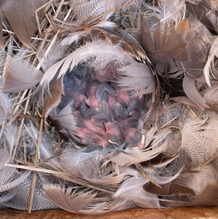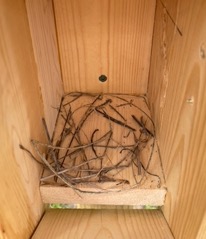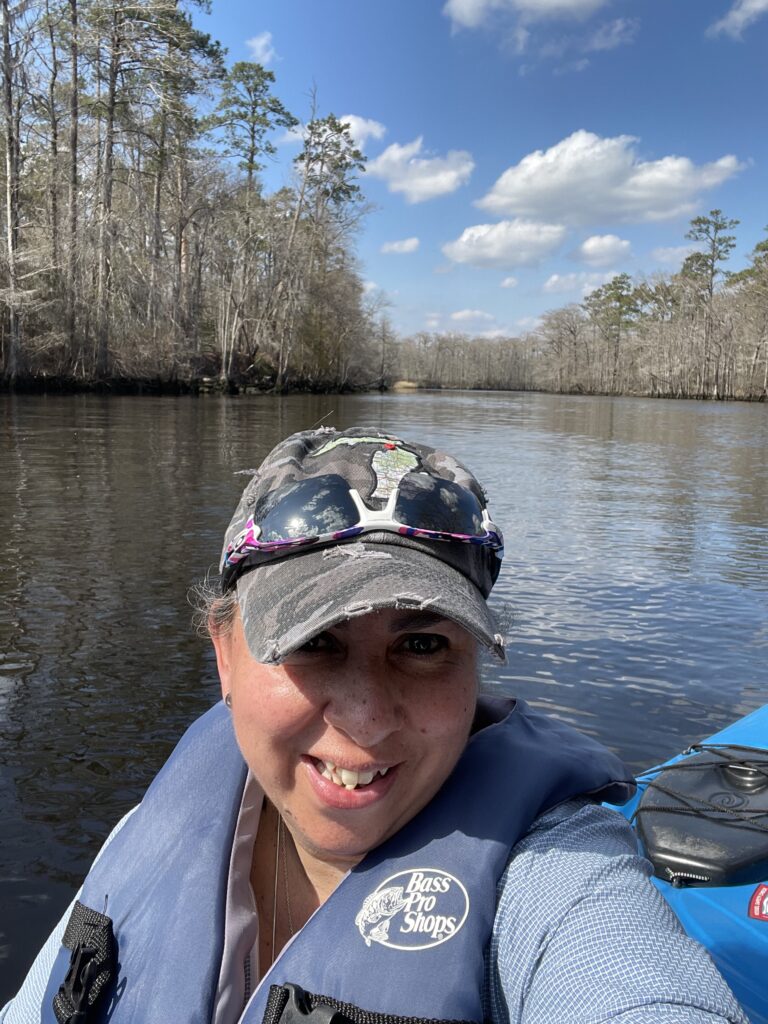I had the joy and privilege of taking over the nest box monitoring at Phyllis Haehnle Memorial Sanctuary in 2023. It quickly became my favorite place to monitor boxes for so many reasons, but mostly because I found it to be such a special, peaceful, full-of-life place to spend several hours of my day.
I had the good fortune of almost always having the sanctuary to myself. As I got further into the monitoring process, I quickly learned the behavior of certain birds in specific locations. I could almost predict how many Tree Swallows would try to dive-bomb me, how many “friends” they would bring along, and how seriously they would take their defending duties.
I found one area to always include the help of the bluebirds. It would start with two adult Tree Swallows dive-bombing me, one or two more would join in, and then the adult bluebirds would lend their help. It became almost comical, and I often wondered what people would think if they saw me laughing, ducking, and talking to these tiny birds out in the middle of a field as if they were some huge predator threatening me. I would soon understand their instinct to protect their young when I opened a box to see the fragile stage of life the baby birds were in. Hopefully, thanks to this protection, they would leave the boxes as healthy fledglings one day.

Tree Swallows in their fluffy bed of feathers. Photo by Alex Johnson
Among the many reasons I enjoyed being at the sanctuary, there was never a moment when I couldn’t count on seeing something new. Watching the sanctuary come to life more and more as the season went on included so many changes. Whether it was the moment the skunk cabbage (Symplocarpus foetidus) started poking out of the wet ground, the sound of more bird species moving into the area, the tiny turtles crossing the path, or the flocks of Red-winged Blackbirds that would congregate on the cattails, I would always appreciate the time I could spend taking it all in.
This year, Haehnle Sanctuary yielded the following results: 29 nest boxes monitored, 69 nesting attempts, 225 eggs, 152 young, and 147 fledglings. This includes three successes in the Wood Duck boxes in Eagle Lake, which was such a treat for me to be a part of. Fellow volunteer Steve Jerant and I prepared the boxes prior to the season, including securing the post of the #12 Wood Duck box, which soon resulted in a nesting attempt. I periodically checked the boxes as the summer went on and was fortunate enough to see the female Wood Duck sitting on her eggs on two occasions. I would apologize to her for disturbing her, then move away as quickly and quietly as possible to give her some comfort that I wasn’t there to disturb her or her eggs.

The new #86 nest box in the Schroeder tract two weeks after installation. Photo by Alex Johnson
Along with successes come failures, and although those were hard and discouraging to see, I hope that some minor changes will help avoid some of those failures in the future. Box #40 was the big letdown for me this year. Nesting attempts resulted in broken bluebird eggs, missing nestlings, dead nestlings, and visible disturbance to the nests. I proposed to Steve that we relocate that box, which will be done in the next month or so. It will join the boxes in unit #7 in the Schroeder tract. Steve and I installed a new #86 box there in July. We had previously seen a lot of bluebird activity there, and sure enough, by the end of July, bluebirds decided they wanted to start decorating. They never completed their nest, but I’m hopeful that they will choose to move in next spring.
House Sparrows were managed by removing many nests and eggs*, primarily in the nest boxes below the overlook. Destroying any bird eggs is difficult for me. Still, it does become easier after each removal, especially when I know I’m preventing a non-native species from competing with a native species. It’s definitely worth it when I see a native Tree Swallow pair move in, nest, and successfully fledge a brood.
In total, there were 147 fledglings (74 Tree Swallow, 41 Eastern Bluebird, 12 House Wren, and 20 Wood Duck). The end of the season is always bittersweet for me. I won’t miss battling the insects or finding my way to boxes through rapidly growing vegetation, but despite the challenges, there’s nothing more satisfying to me than seeing the amount of life that comes out of a nest box trail. It feels good to be a part of the process of collecting this data and doing my small part to ensure each box is cleaned between nest attempts and that boxes are left available for native species. I’m sad the season is over, and even though I love winter, I can’t wait for next spring.
*The Migratory Bird Treaty Act protects bird nests and eggs. It is illegal to remove or destroy any active nest of a native bird species. Nest removal or egg destruction is only allowed for non-native species, such as House Sparrows and European Starlings.
Michigan Audubon’s Phyllis Haehnle Memorial Sanctuary provides over 1,000 acres of protected habitat for birds and other wildlife in Grass Lake (near Jackson). The sanctuary is open daily to the public from dawn to dusk. Visit haehnlesanctuary.org to learn more.

By Alex Johnson, Michigan Audubon Member and Phyllis Haehnle Memorial Sanctuary Volunteer
“As a nature lover and avid birder, it has been my pleasure in life to dedicate countless volunteer hours to the cause of conservation. From blazing trails to monitoring nest boxes to assisting with wildlife rehabilitation, I look for any way to commit my dedication to the causes I believe in. I’m motivated by seeing the excitement in people interested in preserving nature themselves and working together for a common goal. I strive to do better for my community through educating others and sharing my passion for nature and wildlife.”
This article was originally submitted for publication in the Haehnle Newsletter.

